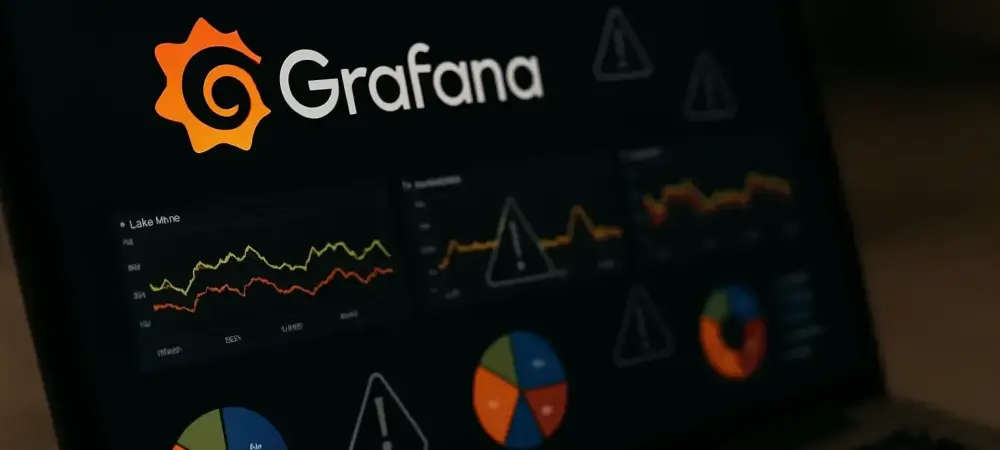In the fast-paced arena of cybersecurity, staying alert to potential vulnerabilities is crucial. Dominic Jainy, a seasoned IT professional renowned for his expertise in artificial intelligence, machine learning, and blockchain, has been keenly observing developments in security vulnerabilities that impact a broad range of industries. Today, he shares insights into two significant vulnerabilities discovered in Grafana, a popular analytics and monitoring platform.
What are the two significant vulnerabilities discovered in Grafana, and what potential risks do they pose?
The vulnerabilities in question are CVE-2025-6023 and CVE-2025-6197. CVE-2025-6023 is a high-severity cross-site scripting (XSS) vulnerability, while CVE-2025-6197 is an open redirect vulnerability. These issues allow attackers to redirect users to malicious websites or execute arbitrary JavaScript code, particularly within Grafana dashboards. This could lead to significant risks like session hijacking or account takeovers if exploited.
Can you explain what CVE-2025-6023 is and why it is considered high-severity?
CVE-2025-6023 is a high-severity XSS vulnerability with a CVSS score of 7.6. It manipulates client path traversal and open redirect mechanisms to potentially redirect users to malicious sites, which then execute arbitrary JavaScript code. This situation is grave due to the minimal requirements for exploitation, such as not needing editor permissions, thus broadening the potential attack surface, especially if anonymous access is enabled.
What is the role of client path traversal and open redirect mechanisms in CVE-2025-6023?
These mechanisms allow an attacker to navigate the client path and exploit redirect functionalities to distort legitimate redirections. By doing so, they can steer users unknowingly to harmful webpages where malicious scripts can run, bypassing certain security controls that would otherwise prevent direct code execution.
Why doesn’t exploiting CVE-2025-6023 require editor permissions, and what conditions make the vulnerability more dangerous?
CVE-2025-6023 doesn’t rely on editor permissions because the exploit framework doesn’t necessitate altering dashboard configurations directly. The danger heightens with enabled anonymous access, making it easier for attackers to execute the XSS attack. Authenticated users, with at least Viewer permissions, render the scripts fully operational and dangerous.
How does the lack of a connect-src directive in Grafana Cloud’s Content-Security-Policy contribute to the risk of CVE-2025-6023?
The connect-src directive is a crucial part of Content-Security-Policy that restricts the origins with which the browser can interact. Its absence in Grafana Cloud’s policy opens up the platform to exploits, as attackers can fetch external JavaScript, increasing the risk of executing malicious code through cross-site scripting.
What are some potential impacts of successful exploitation of CVE-2025-6023 on users?
Successful exploitation can lead to serious consequences, such as session hijacking, where an attacker gains control of a user’s session, and comprehensive account takeovers. This means critical user information and services can be manipulated or accessed unlawfully, potentially causing extensive harm.
Could you describe CVE-2025-6197 and the specific conditions required for its exploitation?
CVE-2025-6197 is an open redirect flaw within Grafana’s organization switching function, marked by a CVSS score of 4.2. Exploiting it requires several conditions: the instance must support multiple organizations, the target should belong to both organizations involved, and the attacker must know the ID of the organization being viewed.
Why are Grafana Cloud users not affected by CVE-2025-6197?
Grafana Cloud users are immune to CVE-2025-6197 since the cloud platform doesn’t support multiple organizations, thereby eliminating the organization-switching condition necessary for exploiting this vulnerability.
How could the open redirect mechanism in CVE-2025-6197 be potentially chained with other attacks?
The open redirect mechanism could be leveraged as a foundational step in a chain of attacks, such as combining with XSS to enhance the severity of the exploit. By strategically redirecting users, attackers can bypass initial security measures, setting the stage for more complex and harmful ventures.
What are the patched versions for both CVE-2025-6023 and CVE-2025-6197?
Grafana Labs has released patches for these vulnerabilities in several versions: Grafana 12.0.2+security-01, 11.6.3+security-01, 11.5.6+security-01, 11.4.6+security-01, and 11.3.8+security-01, addressing both vulnerabilities effectively.
What temporary mitigation strategies are available for organizations that cannot immediately upgrade?
For those unable to upgrade instantly, temporary measures include applying a stringent Content Security Policy for CVE-2025-6023 and adjusting ingress configurations to block specific Grafana URLs for CVE-2025-6197. These adjustments can help minimize exposure while preparing for updated deployments.
How could implementing a Content Security Policy help mitigate the risk of CVE-2025-6023?
Implementing a robust Content Security Policy significantly curtails script-related risks by defining and restricting script sources that browsers can execute. This limits the interaction with untrusted, external script sources, thereby reducing the likelihood of XSS vulnerabilities being exploited.
What ingress configuration changes can help mitigate the risk of CVE-2025-6197?
Adjusting ingress configurations to block any Grafana URLs beginning with / (%2F%5C) can restrict the possibility of redirect paths being exploited. Additionally, limiting to single organization deployments can further reduce potential exposure to such vulnerabilities.
Who discovered these vulnerabilities, and how were they reported to Grafana?
These vulnerabilities were uncovered through Grafana’s bug bounty program, with the discoveries made by Hoa X. Nguyen from OPSWAT and Dat Phung. They were reported in a structured manner, allowing Grafana to swiftly patch and mitigate the risks.
Could you discuss why understanding these vulnerabilities is critical for cybersecurity professionals and organizations using Grafana?
Comprehending these vulnerabilities is essential as they highlight the intricate exploits attackers can leverage and underscore the importance of maintaining up-to-date systems and security measures. It empowers professionals to preemptively defend, ensuring their frameworks are robust against potential threats, thereby safeguarding their operations and sensitive data.
Do you have any advice for our readers?
Stay vigilant and informed about security patches for any software you use. Continuous education on potential vulnerabilities and adopting best practices in security can significantly fortify defenses against evolving threats. Always prioritize applying timely updates to mitigate risks before they can be exploited.

